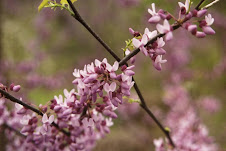"Weed" - such a mean word, rife with anger and judgement, with a healthy dose of disgust. "I have to weed! Look at all these damn weeds! My lawn looks like crap because of all the WEEEEEEEEEDS!!!" But what makes a plant a weed, as opposed to a flower, vegetable, or natural remedy? Only you, my friend, only you. Wouldn't you enjoy gardening a bit more if you could look at the view out of your kitchen window and think "Ah, look at that lovely expanse of medicinal and edible wild plants that I didn't have to do any work to sow or produce! Good thing that I am under no obligation to do anything about removing them due to their many health benefits. I think I'll have another cup of coffee and watch 'Househunters International' for the 450th time." Well, you're in luck. I'm going to spend the next few months exploring the many uses of these volunteer plants so you can consider them a crop, and save yourself the time and trouble of eliminating them with chemicals. Let's get started learning about zone 6 spring time edibles. Our next post will have a few fun recipes created by the husband and designated garden chef, Tom DiGangi!
Garlic Mustard - alliaria petiolata
 |
| spring garlic mustard before sending up flower stalks |
We have lots of this growing in the moist shady areas around the edges of our yard. This biennial will be 2-3 feet tall if left to flower and produce seed. At this stage in spring, it's a low growing clump of triangular to heart-shaped leaves with toothed edges that smell like garlic when crushed. Like most wild greens and herbs, the leaves are mildest and most edible when young, before the plant bolts and produces flowers. We use this like a strong flavored cooked green, although it's also tender enough to be eaten raw and fresh in salads. Make sure you check out Tom's garlic mustard recipes in our next post!
Wild Garlic - allium viveale
 |
| a lovely wild garlic portrait by Tom DiGangi |
Also called field garlic and wild onion, this bulbous perennial looks like small clumps of tall thin grass. When crushed, it gives off a strong garlic/onion odor. In May and June, it will flower and produce little
bulbs, which are also edible. We use the wild garlic grassy leaves just like you would use chives - to sprinkle on top of any finished meat, vegetable, or soup dish to add an extra burst of flavor and freshness.
Dandelion - taraxacum officinale
Do I even need to describe this one? Dandelion, the most hated of lawn invaders, produces yellow flowers, white puffy seed heads, and has a tap root that goes from here to China. All plant parts serve as food and are rich in vitamins A and C. Flowers can be battered and deep fried, leaves can be cooked or eaten raw, and the root can be roasted and used as a coffee substitute. Since I married one of those Italian types, we've been eating dandelion in various formats for quite awhile, so I won't repeat the recipes here. Instead, check out the following old blog posts for some inventive dandelion applications created by Tom:
- why you should eat dandelions
- soup recipe
- pasta recipe
Chickweed - stellaria media
 |
| chickweed running up a raised bed |
 |
| chickweed running amok in my strawberry bed |










.jpeg)



